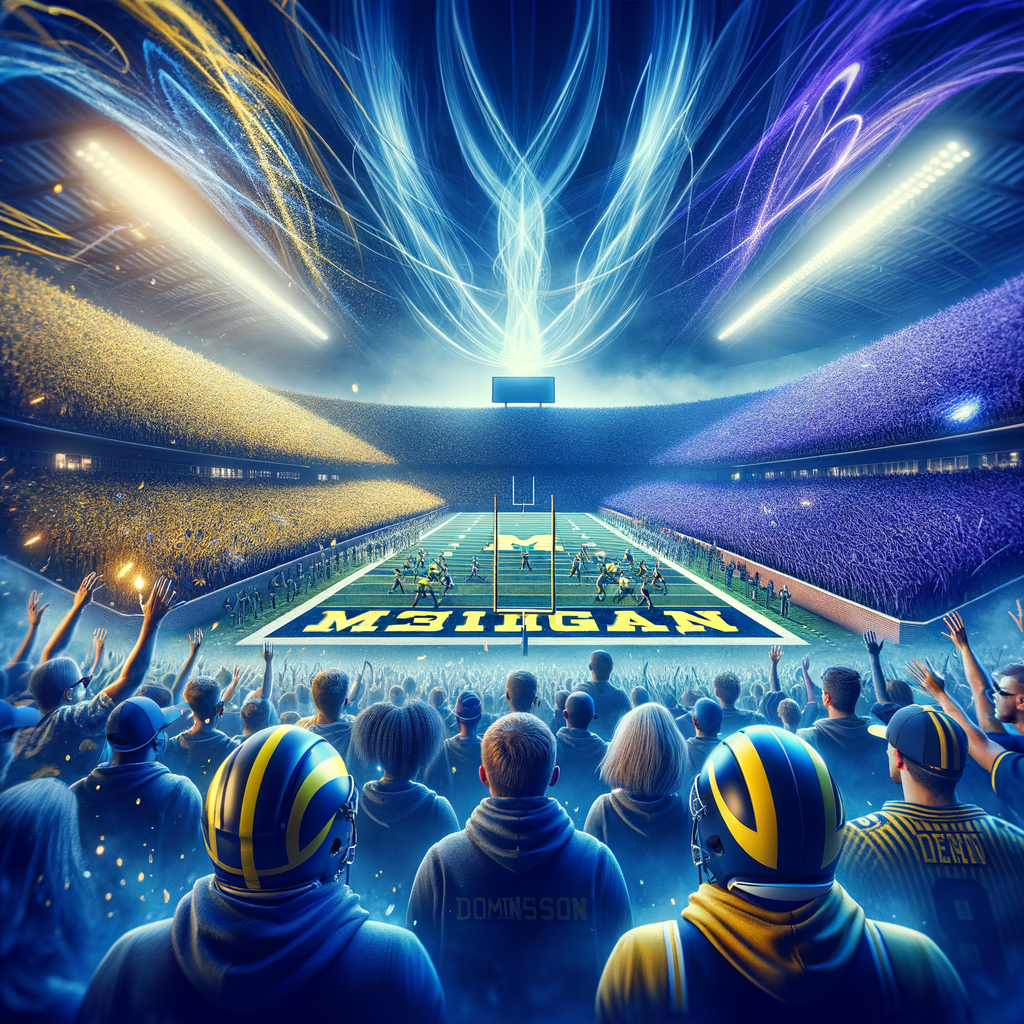Exploring the Academic and Research Excellence of State Powerhouses: Michigan and Washington
Dominance of State Schools like Michigan and Washington Extends Beyond the Football Field
When one thinks of the University of Michigan and the University of Washington, images of packed stadiums, roaring fans, and football players battling for glory often come to mind. However, the influence of these state powerhouses extends far beyond the gridiron. These institutions are not just athletic titans; they are also beacons of academic and research excellence, shaping the future through innovation and scholarship.
At the heart of their academic prowess is a commitment to a broad and diverse range of disciplines. The University of Michigan, located in Ann Arbor, is renowned for its contributions to engineering, business, and medicine. Its research facilities are among the best in the nation, attracting scholars and scientists from around the globe. The university’s research expenditures consistently rank among the highest in the United States, a testament to its role as a leader in cutting-edge innovation.
Similarly, the University of Washington, nestled in the scenic city of Seattle, boasts a formidable reputation in fields such as computer science, oceanography, and public health. Its researchers are at the forefront of addressing global challenges, from climate change to infectious diseases. The university’s collaborative environment fosters partnerships across disciplines, leading to breakthroughs that have a profound impact on society.
The academic communities at both Michigan and Washington are vibrant and dynamic. Students from all corners of the world converge on these campuses, eager to learn from esteemed faculty and to contribute to the rich intellectual life. The universities’ commitment to inclusivity and diversity enriches the educational experience, preparing graduates to thrive in an increasingly interconnected world.
Moreover, the spirit of innovation that permeates these institutions is not confined to their laboratories and lecture halls. It spills over into the local economies, with university-led research parks and startup incubators driving economic growth and job creation. The universities’ engagement with industry partners translates academic discoveries into practical applications, cementing their role as engines of regional and national prosperity.
The impact of Michigan and Washington is also felt in the public sector. Graduates of these institutions go on to become leaders in government, education, and non-profit organizations. They carry with them the critical thinking skills and ethical foundations necessary to navigate complex societal issues. The universities’ emphasis on civic engagement ensures that their influence is as broad as it is deep, shaping policy and public discourse.
As these state schools continue to excel in both athletics and academics, they serve as models for the integration of physical vigor and intellectual might. The balance they strike between these realms is a powerful reminder that institutions of higher learning can be both cradles of scholarly achievement and bastions of community spirit.
In an era where the value of education is increasingly scrutinized, the sustained success of Michigan and Washington stands as a beacon of optimism. It underscores the enduring importance of public universities in fostering talent, advancing knowledge, and contributing to the common good. As they continue to push the boundaries of what is possible on the field and in the lab, these state schools affirm that their dominance is not just a matter of athletic prowess, but a reflection of their unwavering commitment to excellence in all endeavors.
The Impact of Michigan and Washington’s State Schools on Local Economies and Community Development
Title: Dominance of State Schools like Michigan and Washington Extends Beyond the Football Field
When one thinks of state schools such as the University of Michigan and the University of Washington, images of packed stadiums, vibrant tailgate parties, and the roar of the crowd on a Saturday afternoon might spring to mind. Indeed, these institutions are powerhouses on the football field, but their influence extends far beyond the goalposts. These bastions of higher education are not just fostering athletic prowess; they are also pivotal engines driving local economies and catalyzing community development.
In the heart of Ann Arbor, the University of Michigan stands as a testament to the transformative power of a state school. The institution’s presence has a ripple effect on the local economy, with each home game injecting an estimated millions into the city’s coffers. But the impact is not limited to game days. The university is one of the city’s largest employers, providing jobs to thousands of faculty and staff, and supporting a myriad of local businesses from bookstores to restaurants. The influx of students and visitors year-round translates to a steady stream of revenue, ensuring that the city’s economic vitality remains robust.
Similarly, the University of Washington serves as a cornerstone of economic stability in Seattle. The institution’s research initiatives and innovative programs attract investments and talent from around the globe. Startups often sprout from the minds of its graduates, contributing to the region’s reputation as a hub for technology and entrepreneurship. The university’s partnerships with major corporations and its status as a leading research institution mean that it is not just a place of learning but a place of economic creation and innovation.
Moreover, both universities play a significant role in community development. They offer a range of cultural and educational opportunities to residents, from public lectures and art exhibitions to continuing education classes and sporting events. These activities enrich the cultural tapestry of their respective cities, fostering a sense of community and shared identity. The schools’ commitment to public service and outreach programs also ensures that the benefits of their resources and expertise extend to underserved populations, thereby enhancing the overall quality of life in the region.
The educational impact of these institutions is profound. They are incubators of future leaders, thinkers, and innovators. The diverse array of academic programs and research opportunities available at Michigan and Washington state schools equips students with the skills and knowledge necessary to thrive in an increasingly complex and interconnected world. Graduates often remain in the area, contributing their talents to local industries and adding to the intellectual capital of the community.
In essence, the dominance of state schools like Michigan and Washington is a testament to their multifaceted contributions to society. They are more than just athletic titans; they are pillars of economic stability, cultural enrichment, and educational excellence. As they continue to evolve and expand their influence, these institutions will undoubtedly remain at the forefront of shaping not only the futures of their students but also the communities that surround them.
In conclusion, while the thunderous applause for a touchdown pass is a familiar sound echoing from these campuses, the quieter, yet equally significant, applause for their broader contributions should not go unheard. The state schools of Michigan and Washington are power players in their local economies and communities, proving that their dominance indeed extends well beyond the football field.







